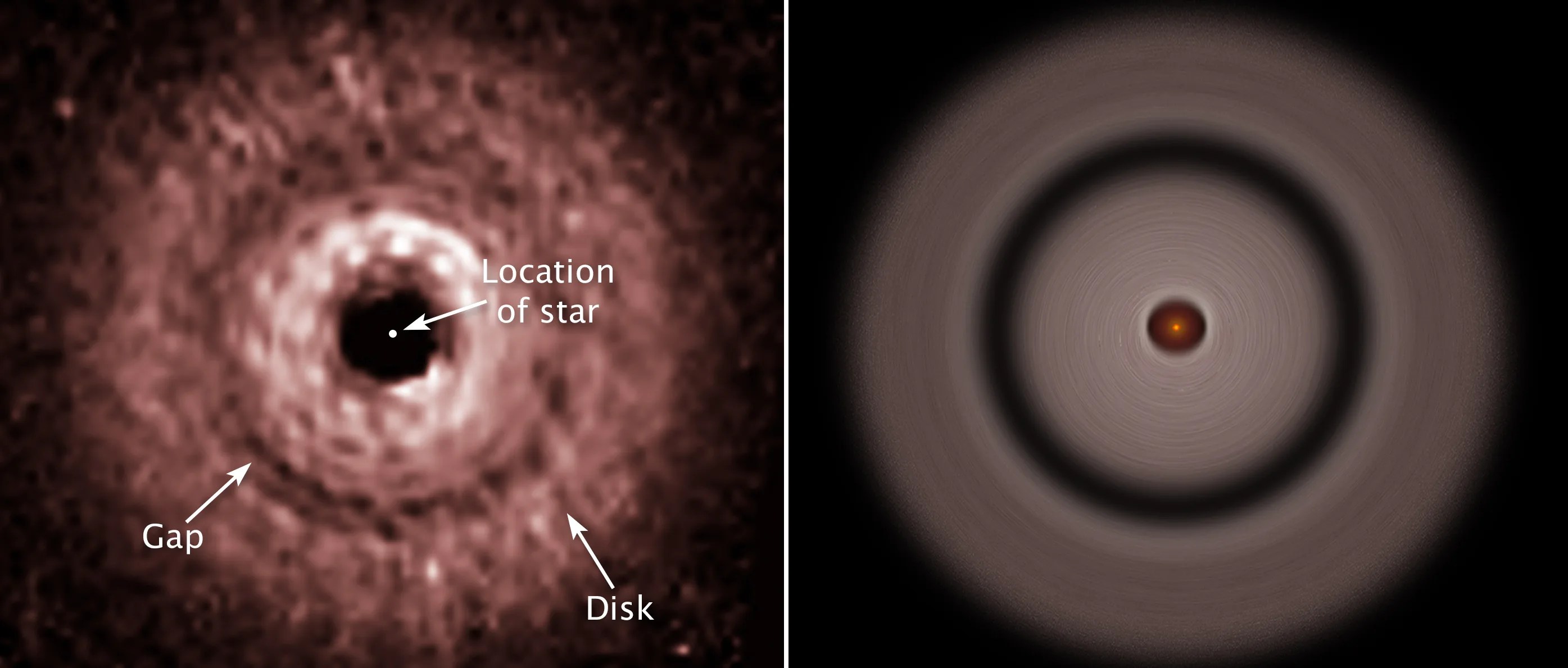
Hubble Observation of TW Hydrae
This Hubble image (left) and graphic (right) show a gap in a protoplanetary disk of dust and gas whirling around the nearby red dwarf star TW Hydrae. The gap’s presence is probably due to the effects of a growing, unseen planet that is gravitationally sweeping up material and carving out a lane in the disk. Astronomers used a masking device within the Hubble camera to block out the star’s bright light so that the disk’s structure could be seen.
Credits: NASA, ESA, J. Debes (STScI), H. Jang-Condell (University of Wyoming), A. Weinberger (Carnegie Institution of Washington), A. Roberge (Goddard Space Flight Center), G. Schneider (University of Arizona/Steward Observatory) and A. Feild (STScI/AURA)
Image CreditNASA, ESA, J. Debes (STScI), H. Jang-Condell (University of Wyoming), A. Weinberger (Carnegie Institution of Washington), A. Roberge (Goddard Space Flight Center), G. Schneider (University of Arizona/Steward Observatory) and A. Feild (STScI/AURA)
Size640x273px
